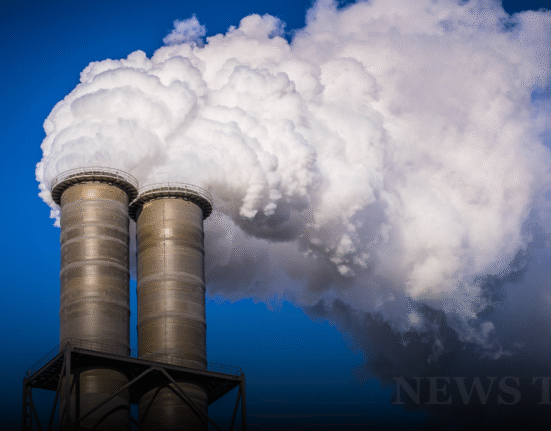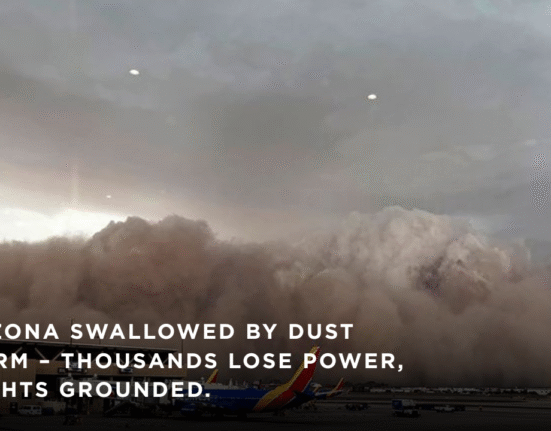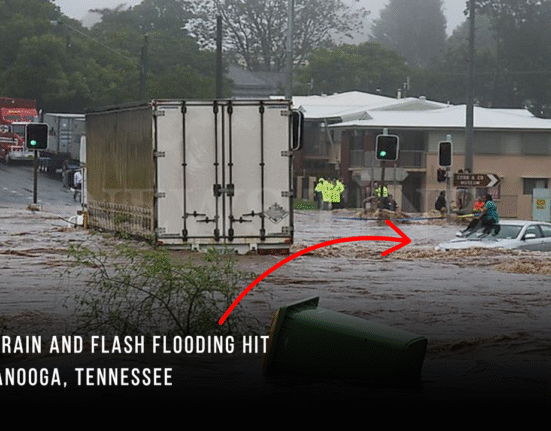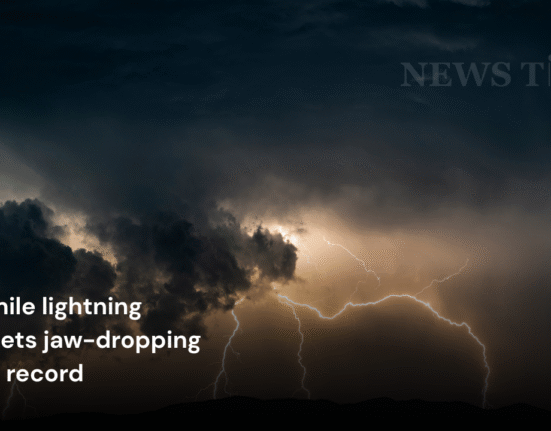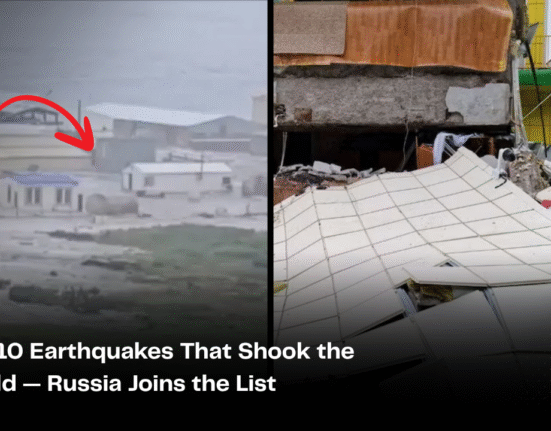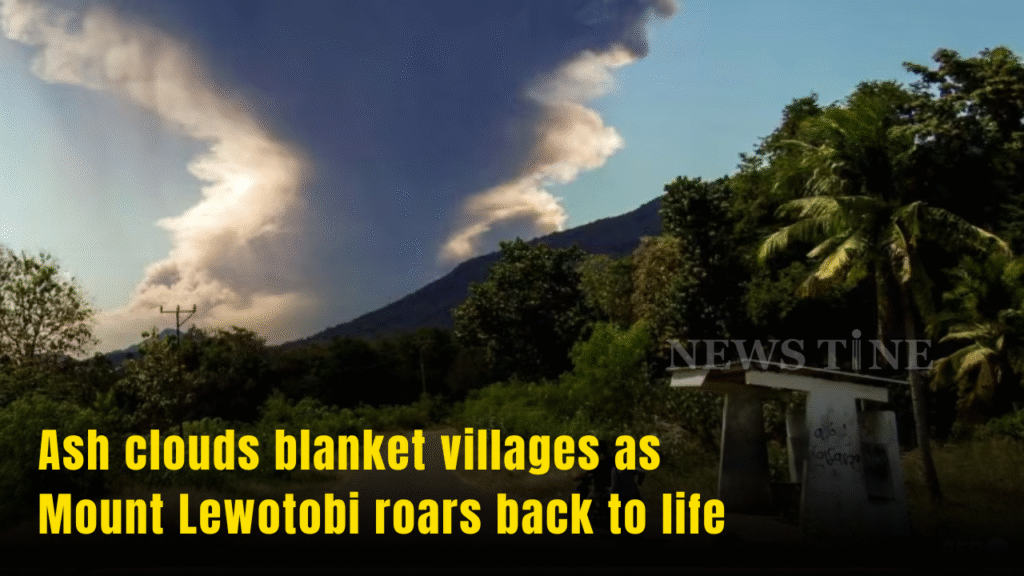
Early on August 2, 2025, Indonesia’s restless Mount Lewotobi Laki Laki awakened again, unleashing towering columns of ash and incandescent debris that stretched nearly 18 kilometers into the sky. For villagers who once viewed the volcano as a distant sentinel, the sudden onslaught of ash, lightning, and roaring tremors turned a peaceful dawn into an unforgettable reminder of nature’s power. In this post, we explore the causes, community impact, historical comparisons, and safety measures surrounding this dramatic event.
“I’ve lived in Lewotobi village for 30 years,” recalls farmer Maya Putri, “but I’ve never seen anything this intense—ash fell like rain, and the sky turned gray at sunrise.”
What Happened: Details of the Recent Eruption
Indonesia’s Geology Agency (PVMBG) reported that the volcano erupted twice within a five-hour span, launching vast ash columns and glowing lava.
Two Consecutive Blasts
- Friday Evening Blast: Sent ash up to 10 km high, illuminated by lava fountains and volcanic lightning.
- Saturday Pre-dawn Blast: Towered to 18 km (11 miles), blanketing villages with hot gravel and fine ash.
Ash Height and Reach
- Maximum Plume Height: 18 km
- Ashfall Zone: Over 8 km radius, encompassing several villages
- Pyroclastic Flows: Traveled up to 5 km down the slopes, carrying gas, rocks, and lava
“Drone footage shows magma rising deep beneath the crater,” said PVMBG volcanologist Dr. Agus Surya. “This unrest could continue for days.”
Historical Context: Indonesian Volcanoes
Indonesia sits atop the Pacific “Ring of Fire,” home to over 120 active volcanos. Here’s how Lewotobi’s latest fits into past events:
| Volcano | Year | Ash Plume Height | Casualties |
|---|---|---|---|
| Mount Merapi (Java) | 2010 | 15 km | 353 killed |
| Mount Sinabung | 2014 | 12 km | ~16 killed |
| Mount Lewotobi (Laki Laki) | 2025 | 18 km | None reported |
Table: Major Indonesian eruptions compared
For further reading on Indonesia’s volcanic history, see our Indonesia Volcano History.
Science Behind the Eruption
Volcanic eruptions like this result from several interlinked factors:
- Magma Accumulation: Rising molten rock increases chamber pressure.
- Gas Exsolution: Dissolved gases (water vapor, CO₂) expand explosively.
- Tectonic Stresses: Plate movement around the Ring of Fire creates fractures.
- Trigger Mechanisms: Minor earthquakes or shifts can breach a cap rock.
According to the Smithsonian Institution’s Global Volcanism Program, magma under Lewotobi shows higher silica content, making past eruptions more explosive [Smithsonian Global Volcanism Program].
Impact on Communities and Safety Measures
Residents face ash-covered roads, contaminated water supplies, and health risks from inhaling fine particulates. The PVMBG advises:
- Stay Indoors: Keep doors and windows sealed.
- Use Masks: N95 or surgical masks reduce ash inhalation.
- Protect Water: Cover wells; use bottled water when possible.
- Monitor Rainfall: Heavy rain can mobilize ash into lahar (volcanic mudflows). See our detailed Volcano Safety Tips.
Emergency Response Timeline
- Alert Raised: August 1, 2025, 6 PM – Watch Level
- First Evacuation: 10 PM – 500 residents moved
- Second Alert: August 2, 2025, 2 AM – Danger Level
- Ongoing Monitoring: Seismic and gas sensors active every hour
Economic and Environmental Consequences
Short-Term Effects
- Agriculture: Crops like rice and corn risk ash damage.
- Transportation: Flights rerouted; roads clogged by ash.
- Tourism: Local guesthouses report cancellations.
Long-Term Outlook
- Soil may benefit from mineral enrichment once ash weathers.
- Reforestation projects could use volcanic debris for habitat restoration.
Personal Reflections and Local Voices
Many villagers describe eerie orange skies and ash-laden mornings:
“It felt like living in a snow globe, but with darkness,” says teacher Ahmad Fauzi.
Photographer Sari Dewi captured haunting images of blackened rice paddies, later posting them with the caption: “Nature’s reminder: respect and resilience.”
Indonesia’s recent volcano drama underscores the delicate dance between people and an ever-changing Earth. While the Mount Lewotobi Laki Laki eruption did not claim lives this time, it delivered a potent reminder: preparedness and community solidarity are vital in the face of nature’s might. Share your thoughts below—have you ever witnessed a volcanic event?


